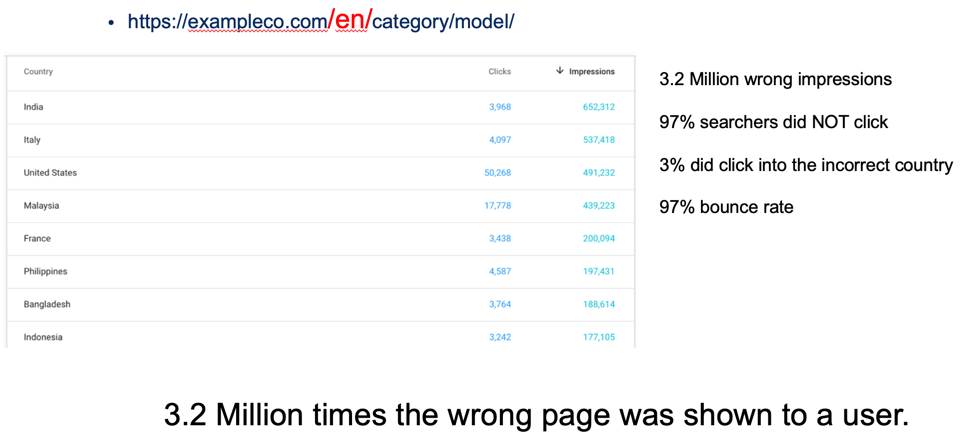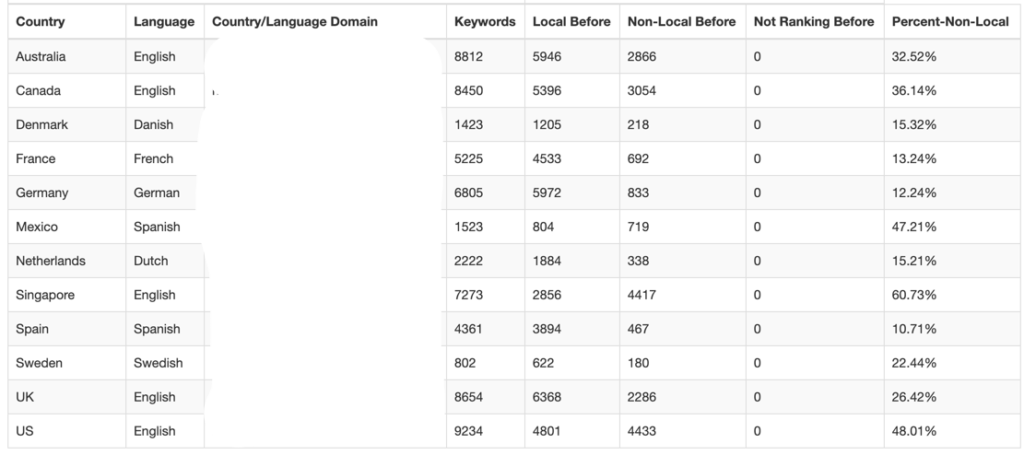2019 Global Enterprise HREFLang Implementation Report Results
May 16, 2019
Breaking HREFLang Perfection Paralysis
May 25, 2019Earlier this week we published a report on HREFlang Adoption report that showed nearly 40% of the most localized sites were not using hreflang elements. On Twitter I had a few people ask me to help them justify the need and/or build a business case for HREFLang.
Traditional Reasons for HREFLang
Google, as well as most best practice guides and blogs, give you three reasons why you should use HREFLang.
- If you keep the main content in a single language and translate only the template, such as the navigation and footer.
- If your content has small regional variations with similar content, in a single language. For example, you might have English-language content targeted to the US, GB, and Ireland.
- If your site content is fully translated into multiple languages. For example, you have both German and English versions of each page.
Real Business Reasons
Honestly, anyone with a global site needs to use HREFLang anyone without it is just making the following are some real world dollars and cents reasons and the methods you can use to get management to escalate the adoption or improvement of your hreflang implementations.
GSC Traffic to Non-Local Pages
A piece of data that any company should have, that does not cost any money to use, is their Google Search Console account.
This is an example from a recent presentation at PubCon. I took a prospective client’s GSC account and found one of their key products was not performing as expected. This product has pages in all 57 countries around the world. The “assumed” that the local page was appearing in each market.
The “global catch all” page, without pricing, was shown 3.2 million times in a single month to counties that have dedicated pages. 97% of the searches that saw this page vs. a local market version did not click. And the 2.65% that did click, 97% of them immediately bounced off the page.
In India, this global page was shown 652k times and had a 0.6% click rate meaning 99.4% of those looking for this product that saw this page did not click into the page.

Non-Local Pages Ranking
Another powerful reason for using HREFLang is when you your rank reports demonstrate you have a problem. In the example below, in the markets between 10 to 60% of the pages ranking were non-local.
In this example, 60% of the ranking pages were not for the Singapore site and 47% for Mexico and surprising to the client, 48% of the pages in the US were not local versions.
This is example is in our HREFLang Comparison tool where we import rank reports for each market before implementing HRFLang and then show the after result. You can build a similar matrix using pivot tables. One more justification for the need for HREFLang for your global business.

Market Team and Customer Complaints
Complaints from local markets has traditionally been a motivator for accelerating adoption of hreflang. If you can collect these, especially from customers, and use them as leverage. They are also a great testimonial when the markets thank you for having a local version and it showing up all of the time.
Building the Business Case
If you need help building your business case please contact us and we can consult with you on developing the impact and help justify it to your management. We developed this article How to Build your HREFlang Business Case for our friends at Search Engine Journal that may help point you in the right direction.



